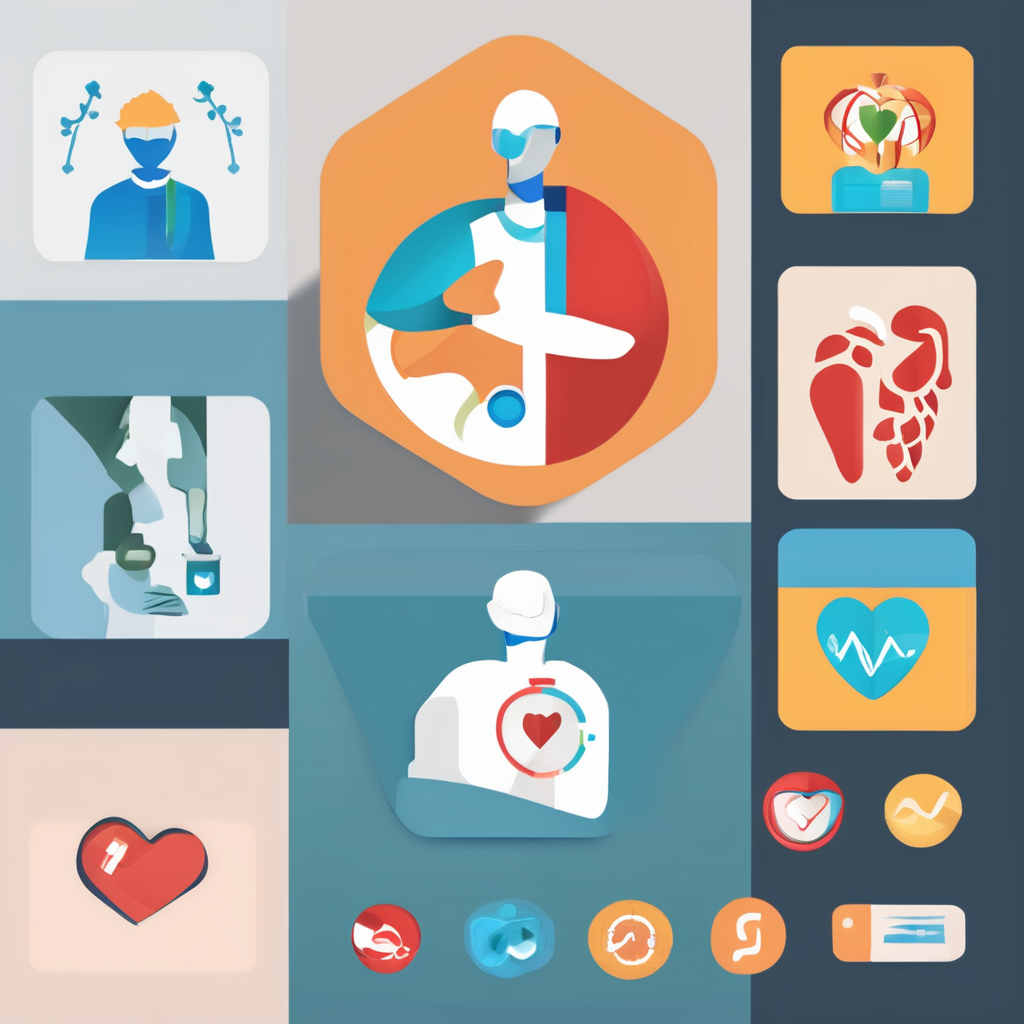Understanding Digital Eye Strain
Digital eye strain is a common condition caused by prolonged exposure to digital screens. It’s characterized by symptoms such as eye fatigue, dryness, blurred vision, and headaches. With the prevalence of technology in our daily lives, these symptoms are becoming increasingly common.
Statistics indicate that digital eye strain is particularly prevalent among young adults in the UK. Estimates suggest that over 50% of this demographic experiences symptoms related to digital screen exposure. This highlights the growing concern about the impact of technology on ocular health.
This might interest you : Revolutionizing Inflammatory Arthritis Detection: The Role of Ultrasound in UK Rheumatology Practice
Several factors contribute to the increase in digital screen usage. The rise of remote work and online education, constant connectivity through smartphones, and increased leisure screen time are significant contributors. These habits lead to prolonged screen exposure, often without breaks, exacerbating digital eye strain.
It’s important for individuals to be aware of these symptoms and take preventive measures. Adopting the 20-20-20 rule (taking a 20-second break to view something 20 feet away every 20 minutes) can help alleviate symptoms. Additionally, adjusting screen lighting and maintaining an appropriate distance from the screen are practical solutions to reduce digital eye strain.
Effective Strategies for Prevention
Understanding preventative strategies is crucial for maintaining optimal eye health. Regular eye exams and screenings are fundamental, as they aid in early detection of issues, helping to prevent more severe conditions over time. By identifying potential problems early, individuals can often avoid complex treatments later on.
Lifestyle adjustments also play a significant role in preserving eye function. Small changes, such as ensuring proper lighting when reading or working, can minimize strain on the eyes. Frequent breaks during screen time, and ensuring correct posture while using digital devices, are essential practices.
Incorporating a balanced diet high in leafy greens, omega-3 fatty acids, and vitamins A, C, and E can further support eye health. Hydration is equally important. Ensuring adequate water intake helps prevent dry eyes and irritation.
In terms of clinical practices, UK optometrists are recommended to provide patients with tailored advice on eye care routines and to encourage consistent follow-up appointments. Utilising advanced technology for more precise assessments can enhance the efficacy of preventive practices. By adopting these clinical practices, optometrists can offer better, more targeted care, reducing the likelihood of preventable vision problems.
Educational Resources for Patients
Accessing quality healthcare involves not only receiving treatment but also understanding it. Various patient education tools are available to facilitate this understanding.
Informational Materials
One essential component of resources includes educational pamphlets and brochures. These tools are designed to provide concise and accurate information about specific conditions, treatment options, and preventative measures. With clear language and engaging visuals, these materials serve as an important reference for patients seeking to understand their health better.
Workshops and Seminars
Workshops and seminars are dynamic ways to present educational resources. By organizing events focused on eye health, healthcare providers can bring together specialists and patients in an interactive setting. These sessions not only raise awareness but also allow for questions, making education a two-way street. Topics may include healthy lifestyle habits for eye care, the latest in treatment options, and advancements in technology.
Online Resources
In today’s digital age, leveraging online platforms has become an efficient method for resource dissemination. Websites, webinars, and social media channels provide patients with instant access to a wealth of informational materials. These platforms can be regularly updated to reflect the latest medical knowledge, ensuring that educational resources remain current and accessible from any location.
Communication Techniques with Patients
Effective patient communication is crucial, especially when discussing common concerns like digital eye strain. One successful approach involves using layman’s terms to explain digital eye strain symptoms, ensuring that patients understand the impact of excessive screen time on their eyes. By clearly identifying symptoms such as headaches and blurred vision, practitioners can build a strong foundation for further advice.
Offering actionable advice is the next step. Encourage patients to adopt the 20-20-20 rule: every 20 minutes, look at something 20 feet away for 20 seconds. This simple tip can significantly reduce eye strain. Additionally, educating patients about proper lighting and posture can foster proactive engagement in their eye health.
Engagement is especially important with young adults, who often spend long hours on digital devices. Relatable communication methods can facilitate this process. For example, incorporating digital health apps or gamifying eye exercises can capture their interest.
Building rapport through casual but informative conversations can also increase receptivity. By discussing topics and concerns relevant to their lifestyle, healthcare professionals can ensure patients feel both informed and empowered to manage their screen time effectively. Such techniques forge strong relationships, demonstrating the practitioner’s commitment to the patient’s wellbeing.
Research Findings and Case Studies
In recent years, research has highlighted the increasing prevalence of digital eye strain among young adults. With the surge in screen time due to remote work and online learning, studies have reported a significant increase in symptoms such as eye fatigue, dry eyes, and headaches. One study, for instance, demonstrated that up to 70% of young people who use digital devices extensively experience some form of digital eye strain.
Case studies have played a crucial role in showcasing effective intervention strategies. For example, a university implemented scheduled screen breaks and blue light filter applications, leading to a notable reduction in symptoms among participating students. Another case involved an IT firm that introduced ergonomic assessments and vision training workshops, resulting in improved employee eye health and productivity.
The analysis of evidence-based practices offers valuable insights for optometrists seeking to address digital eye strain. Recommendations include promoting the 20-20-20 rule—taking a 20-second break to view something 20 feet away every 20 minutes. Additionally, the use of specially designed computer glasses with anti-reflective coatings has proven beneficial. These practices can significantly alleviate symptoms, demonstrating a proactive and practical approach to managing digital eye strain in today’s screen-dominated environment.
Leveraging Technology in Eye Care
Advancements in technology integration are transforming how eye care is delivered, offering both professionals and patients cutting-edge tools to enhance eye health. One significant innovation is the use of smart technology to monitor eye health actively. This can involve wearable devices that track eye movements or digital habits, enabling more accurate assessments and proactive interventions for potential issues.
In patient assessments and feedback, innovative digital tools are revolutionising the field. These tools provide eye care professionals with precise metrics and real-time data, improving diagnosis accuracy. Patients benefit from interactive platforms that offer personalised care plans and progress indicators, fostering a more informed and engaged approach to their eye health journey.
Moreover, telehealth plays a crucial role in managing digital eye strain, a common issue resulting from prolonged screen exposure. It offers the convenience of virtual consultations, allowing patients to receive expert guidance without having to visit a clinic physically. This approach not only saves time but also makes it easier to maintain regular check-ups and manage symptoms promptly.
By embracing these innovations, eye care can become more personalised, efficient, and accessible, ultimately leading to better outcomes for patients.
Community and Professional Collaborations
In the field of eye health, fostering collaboration with educational institutions is essential. Engaging with schools and universities not only raises awareness among students about the importance of eye health but also fosters a generation informed about preventive measures. Partnering with such institutions can lead to innovative research and development, integrating eye wellness into curricular activities and potentially influencing policy changes concerning student health.
Building partnerships with technology companies is another forward-thinking strategy. As tech devices become more prevalent, these collaborations aim to mitigate the potential adverse effects of screen time on eye health. By working together, eye healthcare professionals and tech companies can develop solutions like screen-friendly apps and ergonomic tools, prioritising eye wellness in a digital age.
Community outreach programs play a critical role in prevention and increasing awareness of eye health. These initiatives bring vital information to the community’s doorstep, often through workshops, seminars, and health camps. The focus is on empowering individuals with knowledge that can prevent eye diseases and promote overall well-being. Such community outreach efforts ensure that eye health remains a priority at both individual and communal levels, promoting a healthier society.











